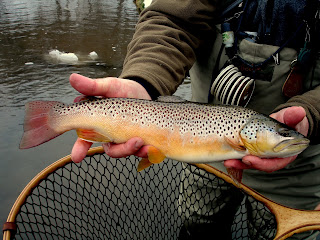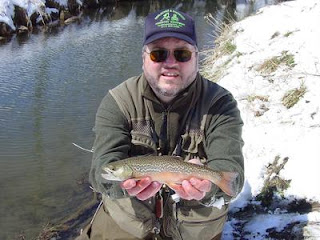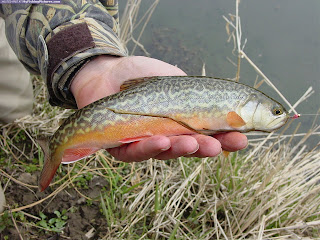Beiträge von LenHarris
-
-
-
-
-

The closed season in Wisconsin is 5 months long. The long winter certainly teaches me some patience. I am not fond of of the learning experience every winter.
The below slide show will ease all of you Wisconsin Angler's pain. Then again it might DRIVE you crazy!
-

Wife gave me the OK to get another LDH NetShe asked me what I needed 2 for. I asked her what is one broke? I needed a back up. It didn't take much and I won her over.
Which should I get?
It will be a steelhead net for sure.
Only question is which kinda wood?
I am leaning towards a curly walnut like the one above that use to have.
I only have one net now.
Either sold or gave away nets to people that loved them.

My birdseye maple net is my current and favorite and has some serious MOJO in it -
i worked in Madison for 14 years and translated to a group from Madison's sister city once. It was 18 years ago. They were all police officers.
-
-
-

Here are a few of the flies that I have found to catch trout in Wisconsin's Driftless Area.
More in the link below.
-

This hole is a head scratcher.
You are looking downstream in the photo.
It is mid september.
Lots of leaves on the surface.
The water dumps over a slight ledge all the long the grass line on the right.
The far left is a rock face that "chairs" to a deep slot. All rock.
The upstream approach is tight.
The water is slow. -

Written by: Len Harris
Photos by: Len HarrisThe tiger trout is a sterile hybrid cross between a female brown trout and a male brook trout. The fish exhibits unusual markings found in neither parent. Tiger trout are rare in the wild, appearing only in areas where brook and brown trout share spawning grounds. Stream born tigers take on the appearance of their fathers (brook trout) Hatchery tigers look more like their mothers (brown trout).
Wisconsin has NO stocking program and ALL tigers caught in Wisconsin streams are "Natural" tigers.
This interspecies cross is unusual, in part because each fish belongs to a separate genus (Salvelinus for brook trout and Salmo for browns). It happens rarely in the wild, but can be (and is) easily performed by fisheries biologists or hatchery technicians.
This wild (non-hatchery) tiger trout was caught in Southwestern Wisconsin by angler Kevin Searock. A typical tiger caught in the wild are 4 to 16 inches. *below*

Tigers are pretty fish. The normal vermiculations (wormlike markings) found on the backs of most brookies become enlarged and often contorted into stripes (hence the name 'tiger'), swirls, spots, and rings. The trout also exhibit a greenish cast, which lets you know, when you hook one, that there is something different on the end of your line long before the fish is in hand.
Naturally-occuring tiger trout generally appear only in streams that have higher brook trout than brown trout populations. And while they don't appear often, they are becoming more commonly found in the Midwest and New England.
-

My own photo got me fired up. I took this
photo and did not fish it. I watched as an
experienced caster did average in here.This was new permission. It was the first time I was ever
on this stretch. How would you fish this run and what with
in mid september in Wisconsin?bigger photo on this link
http://lenharris.blogspot.com/…ms-of-driftless-area.html
just click on photo face a couple times. -
-
-
-
-
-
Smoked Steel Ala Len


Two medium sized steelhead cut in horse shoes
plastic 10 quart container
1/2 full with water
1.5 pounds non-iodized salt
2 pound brown sugar
3 cups real lemon
10 tablespoons dill weed
8 tablespoons red pepper flakes
4 tablespoons garlic powder
4 tablespoons onion powder
3 teaspoons Worcestershire sauceStir and place trout in the mixture.
Place a plate or glass cutting board on the trout so the the trout are in the brine completely. Soak 14 hours. Next rinse and then reapply dill , garlic, onion, and red pepper flakes in the chest cavity and on both sides and put in the smoker. Then use the brine in the bowl in the bottom.
Smoke until fish flakes off of bones easily.
-

















